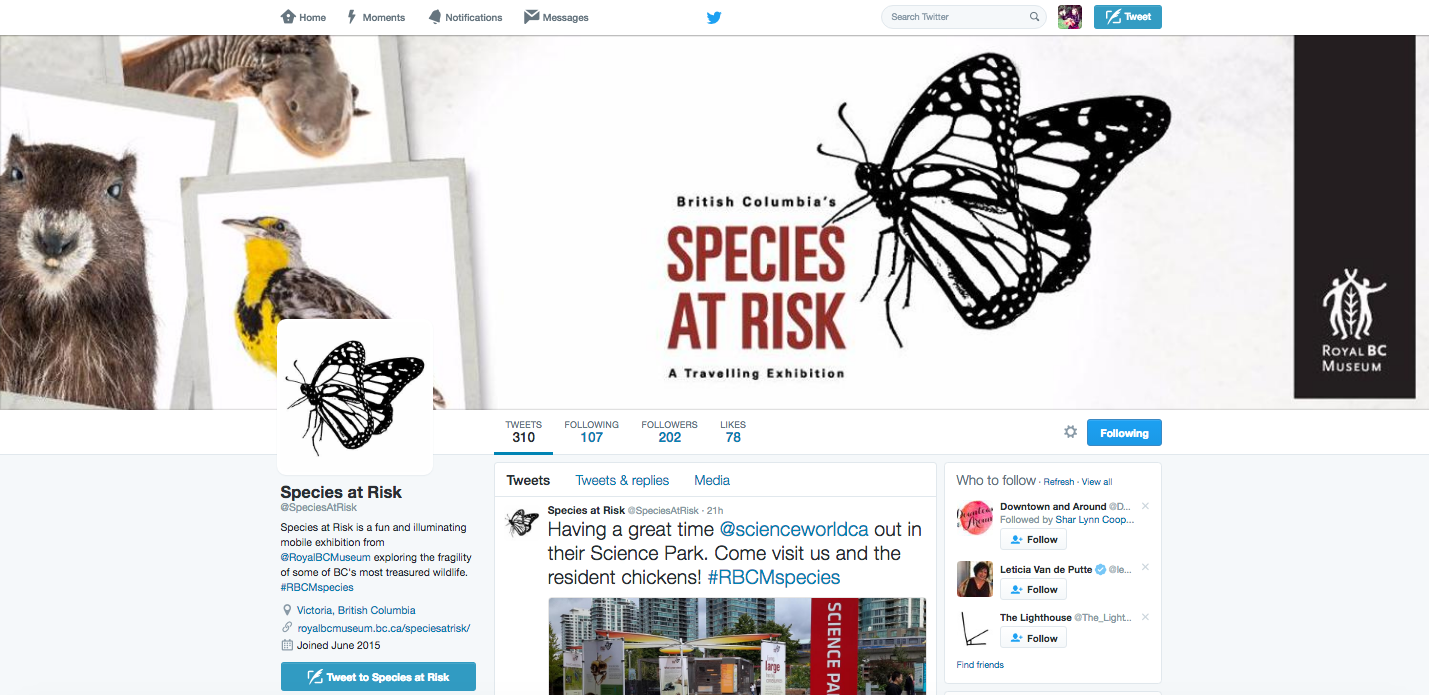By: Jaime Clifton, Research Curator
A key difference between “old museology” and “new museology” is a shift in focus, from a collections centred ethos to a visitor centred ethos. This controversial evolution, first appearing in the 1970s, has ultimately forced communications to the forefront of curatorial practice. Social media and web communications have more recently taken the museum world by storm as content sharing is incredibly effective in reaching audiences. It not only provides a platform for a back and forth dialogue, but also functions as an additional entry point for audiences (including those who cannot visit the museum).
A good example of how museums are integrating multiple communication channels, in particular digital media, is the Species at Risk travelling exhibition. This mobile museum, developed by the Royal British Columbia Museum (RBCM) and the Robert Bateman Centre Gallery, is encouraging conversations around “what BC could lose if we don’t make big changes to our relationship with the natural world”. To support the project, the RBCM created a web-based learning portal that shares images, videos, audio files, and links to educate the public. They’ve also created a twitter feed that documents their travels. By communicating knowledge through multiple entry points, this project has a better chance of engaging a much larger audience.

Screenshot of RBCM's Species at Risk Twitter page
- Log in to post comments



CRC Comments